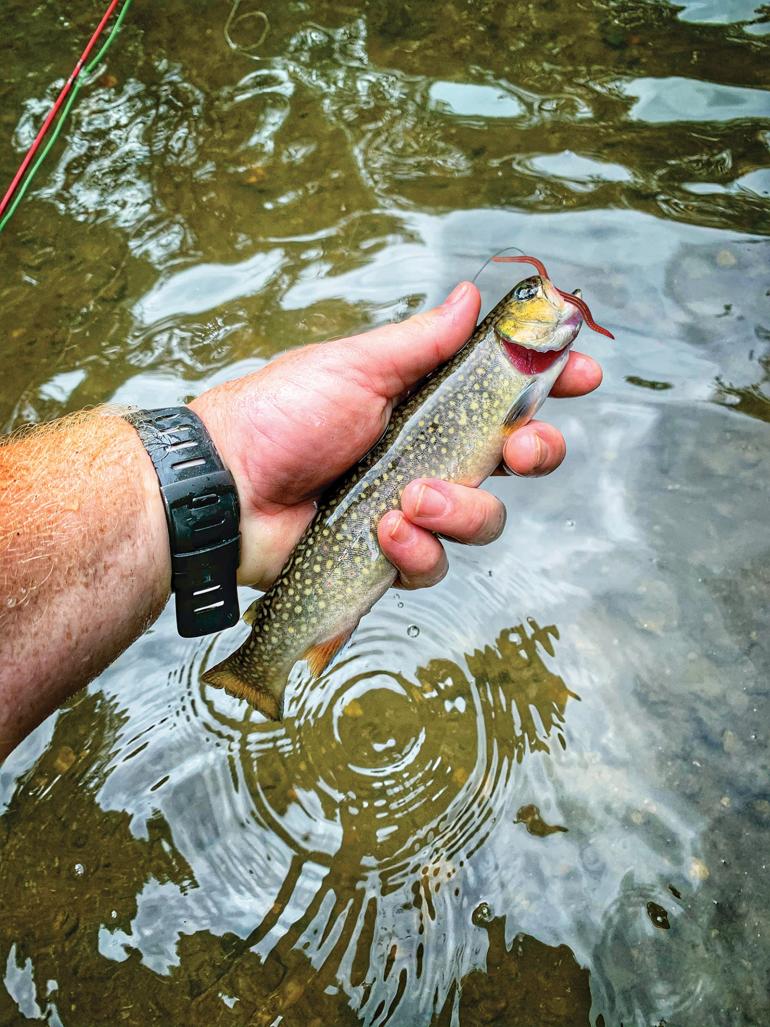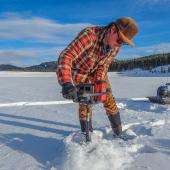Blurred Lines
Clever spin-fly crossovers.
There’s an uneasy and sometimes downright hostile relationship between fly anglers and those who ply the spinning rod, particularly on Montana streams dominated by trout guides. Some years ago, I heard an outfitter on the Bighorn River near Fort Smith burning the ears of a bait fisherman securing a large brown trout on a stringer.
But in reality, the catch-and-release purist has plenty in common with the catch-and-eat carnivore. They both revel in the challenge of finding and fooling fish. And they both kill plenty of their quarry. Mortality rates among released trout range from 1-20% depending on the conditions and release technique of the angler.
If catching is the goal, spinning gear and fly tackle are tools of the same trade.
So let’s set aside the rivalry and misconceptions. If the goal is catching for sport or consumption, clever anglers in both camps can adapt tackle and techniques from the other. Here are some points of crossover.
Spin with a Fly
Spin anglers can effectively utilize flies under many conditions. Perhaps the most notable for Treasure State anglers involves plying a dry fly on alpine lakes. In my childhood and early teens, I fished exclusively with spinning gear. Hike-in outings to alpine lakes normally yielded really good fishing. But a couple of times, trout were so preoccupied taking flies from the surface that they ignored my shiny Mepps spinners.
As a young adult, an older buddy and I made a multi-night backpack trip into the mountains south of Big Timber. One evening, the cutthroats would have nothing of our hardware. Unfazed, my friend produced a casting bubble and a few flies from his little fishing kit. He attached the bubble to the line, then tied on a fly three feet below the bubble. After slicking it up with floatant and partially filling the bubble with water, he lobbed the creation onto the lake, immediately reeling to take up the slack line. Within seconds a greedy trout rose to the fly. In short order he claimed another for our dinner.
Along with dry flies, it’s possible to fish streamers and nymphs with spinning gear. This works really well in lakes, ponds, and slow-moving streams. Shortly after ice-out, trout and other species often cruise the shorelines, gladly grabbing nymphs or other morsels just above the bottom. Suspending a weighted nymph under a casting bubble is deadly method for targeting these fish.
It’s important to put the fly very close to the bottom. Most casting bubbles attach by passing the line through a segment of tubing, then twisting it to secure the bubble in place. Adjusting the depth of the fly is as simple as untwisting the tubing, then lengthening or shortening the line as needed. A very subtle twitching motion to make the nymph rise from the bottom is all it takes to incite a strike.
Fly with a Jig… or Bait
Lisa, my wife, had never fly-fished for panfish. On a warm early-summer afternoon, we pushed a canoe into a small reservoir and got busy. To no avail. No matter what streamers we cast, the fish weren’t having it.
But I’d come prepared. An hour into the fruitless fly-flinging, I slid out a worm container disguised in a zip-top bag from the cooler. We traded flies for jig heads, upon which we skewered wriggling worms. Presto. Lisa giggled and grinned like a preschooler, reeling in bluegills and the occasional smallmouth bass with her Orvis outfit.
Bait also beckons for fly anglers beyond panfish. The largest golden trout I’ve laid eyes upon was landed by a friend of mine, a trout guide, who finally gave up on traditional flies and drifted one of my worms into the inlet stream of an alpine lake.
Weighted jigs can also be plied with a fly rod. They sink more quickly than weighted flies and can be adapted for the occasion. I’ve fished jigs from a fly rod right on the sandy bottom of a backcountry pond, where the trout definitely preferred a black jig with a sparkly brown twister-tail over any fly in my box. A similar situation occurred on Father’s Day weekend one year when the crappie and bass I was targeting would have nothing to do with my traditional flies, but greedily grabbed a yellow jig with a matching marabou tail.
If catching is the goal, spinning gear and fly tackle are tools of the same trade. The only impediment is a purist attitude, easily parked with the pickup by open-minded anglers.
Jack Ballard grew up on a ranch west of Three Forks, where he learned to fish with worms. He’s been after Montana trout with all kinds of tackle for over 50 years.










